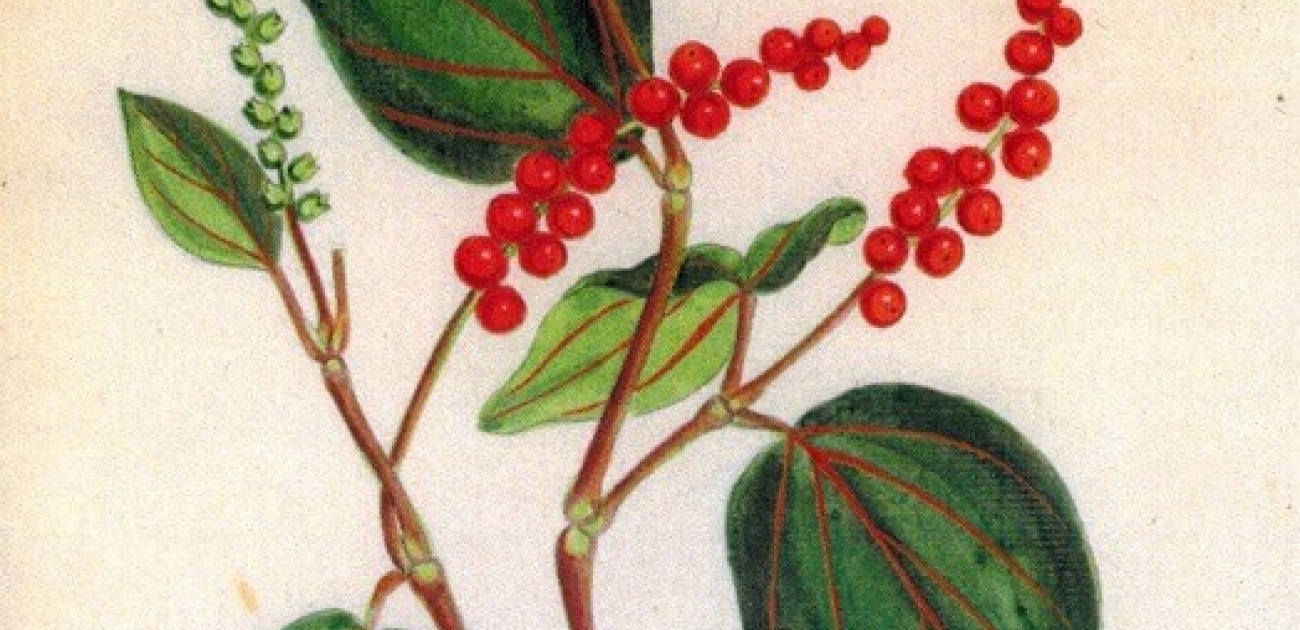14 March 2018
The Different Flavours Of Pepper
Rethinking Pepper - Developing A Way To Classify Peppers Based On Flavours.

Pepper conjures up images of warm, aromas and a biting heat.
Pepper talks of colours – white, black, green, red, pink.
Pepper conjures up exotic places: the Fabled East Indies, India, Malaysia, Tellicherry Pepper, Jamaican pepper, Sichuan pepper, Tasmanian pepper, Penja Pepper.
Pepper tells of myths: Vasco da Gama, Christopher Columbus, the Spice Islands, Grains of Paradise and Passion Berry.
But what is pepper?
In the strictest sense, it is Piper nigrum and its wider relations – the Piper species.
This though is far too narrow a definition that fails to capture pepper’s mystery. It’s a digital response typical of our times. It misses the wide range of spices and berries that function like pepper in world cuisine. We live in an analogue world that’s fuzzy, hazy and wavy not a digital world of hard and fast rules, of black and white, pepper or not pepper.
I have a more nuanced view of pepper and love the differences more than the similarities between peppers:
The Mapuche people of Southern Chile use Chiloé Pepper like we use black pepper – yet it’s from a completely different plant and is fruitier, less hot and more bitter.
Pepper changes with the effects of processing – so black and red are spicy, hot and pungent, green is spicy and frivolous, but white is intensely hot without any spiciness. Perhaps a hint of damp and sweaty rugby socks.
For me, pepper is really a group of natural flavours that have heat, spiciness and fruitiness and enhances food through kicking our senses into action – they amplify the flavours already within other ingredients – lightening vegetables, enhancing monkfish or sea bass and livening up chicken.
But really there should be heat or something akin to heat.
It takes in the whole range of chilli pepper through black, long and Sichuan pepper to the more aromatic cardamom flavours of grains of paradise and mulling wine taste of allspice and bitter-fruit of pink pepper.
So, if we’re going to throw out the botanical index and rip up our atlas of the pepper world, where do we start? Can we even hope to unpick the options to build up a workable menu?
How do we catalogue the vast range of spicy berries and fruits that can be called – pepper. Most people just stick to the alphabet. Jill (Norman) is much better using flavours as the basis. Pepper is pungent.
But I think we can drill down further. It’s a tough one.
But we’re now getting nerdy and gnostic about it, so it probably doesn’t travel far outside of specialist chefs and fine food books. It’ll certainly never become mainstream – this isn’t the pile it high, sell it cheap world of Wal-Mart and Tesco. Not even Waitrose and Whole Foods Market shoppers are going to work this method for long.
So, let’s rethink pepper by going back to the basics.
First impressions – its colour and shape. Long, big, small – uneven corns. Pink, red, deep brown, white or green. Or something different – are they tailed or pods?
Second - aroma, scent or smell: what are each pepper’s top notes those first scents, those general impressions that you get when you open the pot – peppery, smoky or lemony? What are the nuances and wrinkles of aroma from a crushed pepper as you crunch it in a mortar and pestle?
Aromas develop over time. Let your nose unravel the mysteries. Smell is highly sophisticated and tells of how ripe the berries were when picked, how they were dried – sun, air or freeze dried, were they pickled, how were they treated – water to scrub off the outer pericarp or roasted, smoked.
Most peppers fall into the spicy, herbal, floral, fruity range of aromas. There’s not much earthiness or milkiness in there. Of course, those nuances can give citrus or smokiness but they’re not there at the outset.
But one surprise is that there is a definite animal element, a meatiness in the profile of true pepper. Sometimes I wonder whether this is why pepper works so well with almost all things?
With fruit and vegetables because of its woody, fruity, herbiness, but also with meats because of its hidden animal. So, our taste buds have been telling us about umami, the 5th taste, all along but without us knowing it.
Third – taste.
Taste’s a much less sophisticated sense. Pepper has a definite bitterness.
We need to widen taste into flavour. Now, we include its smell and mouthfeel. One of pepper’s main characteristics is that immediate attack, that assault, on the senses – hot or cold or numbing. These heat sensations can mask the subtleties of flavour – think of those really hot chillis that are truly unpleasant and simply just hurt, but even the mega-hot naga jolokia chilli smells of very ripe bananas before you get kicked in the mouth by its heat.
First you get the onslaught that is sharp and fruity. Then as you aerate the pepper you get its bite. Then there is the long tail – its aftertaste. For Sichuan pepper, this can intensify and make your tongue feel really quite anaesthetised – almost unpleasant.
Heat ranges from a sweet fruitiness and subtle through to fiercely fiery. This is mouthfeel, not really a taste or an aroma – it’s a sensation. But for me, heat is really what pepper is about.
Before chilli sailed its merry way from the Americas, pepper created the heat in Indian food – it’s still there in Chettinad recipes for example. It was a subtler feeling, a world of greater flavour depth.
The tingling of Sichuan pepper is similar – not a taste but a mouth sensation, and very definitely a characteristic of Chinese cuisine.
Now that we have a framework, let's put these together into a Pepper Menu. A Pepper Menu is for April.




